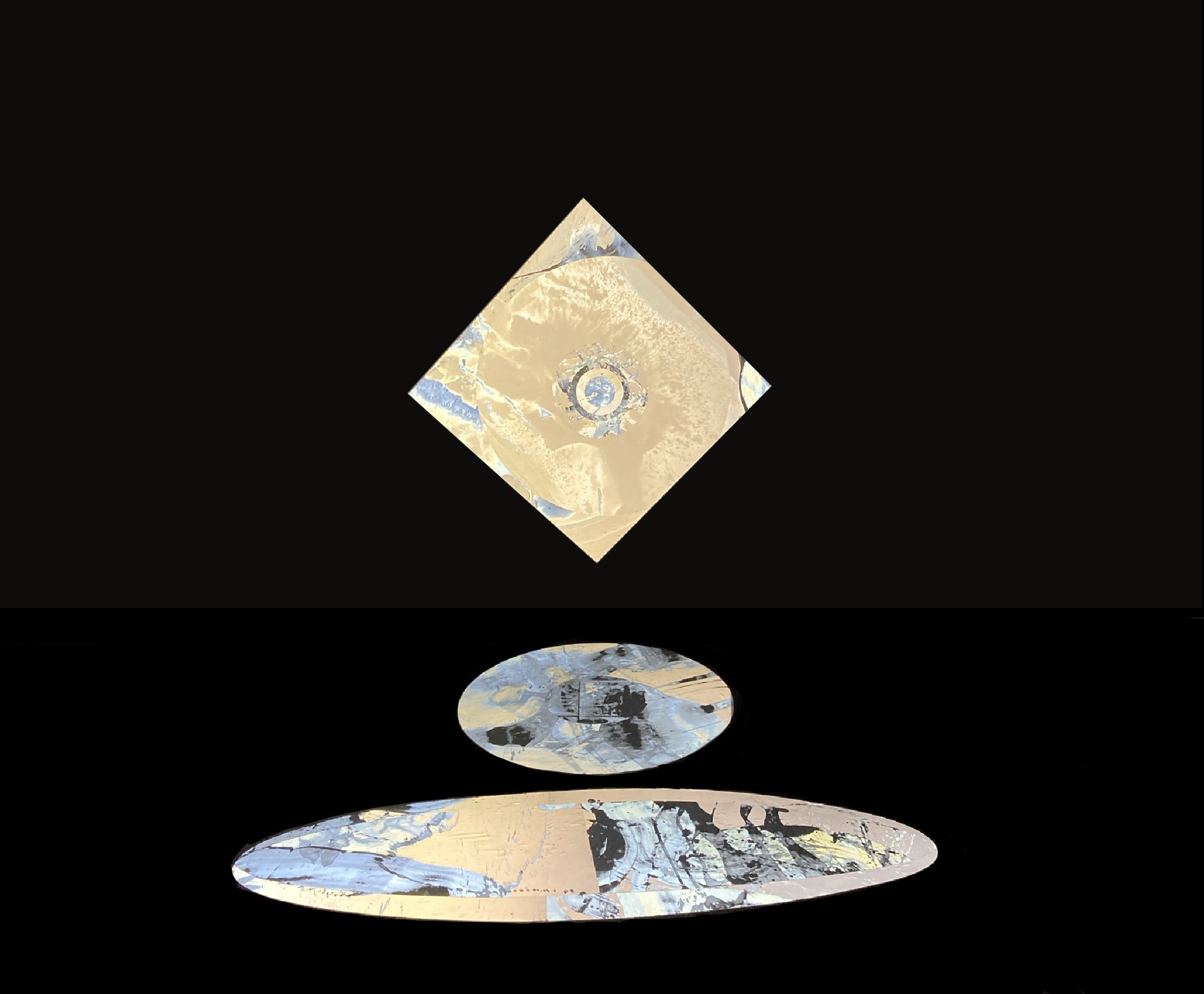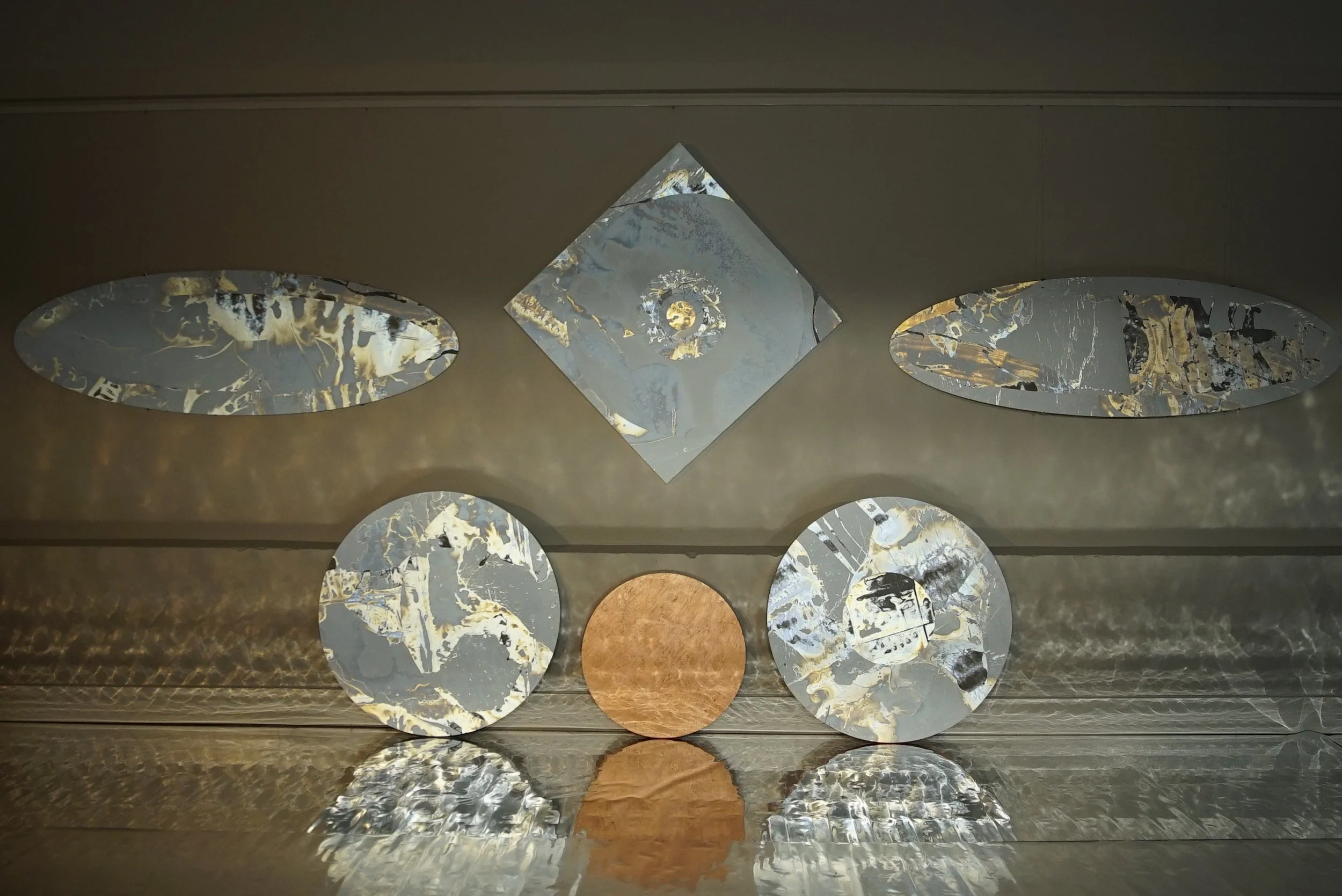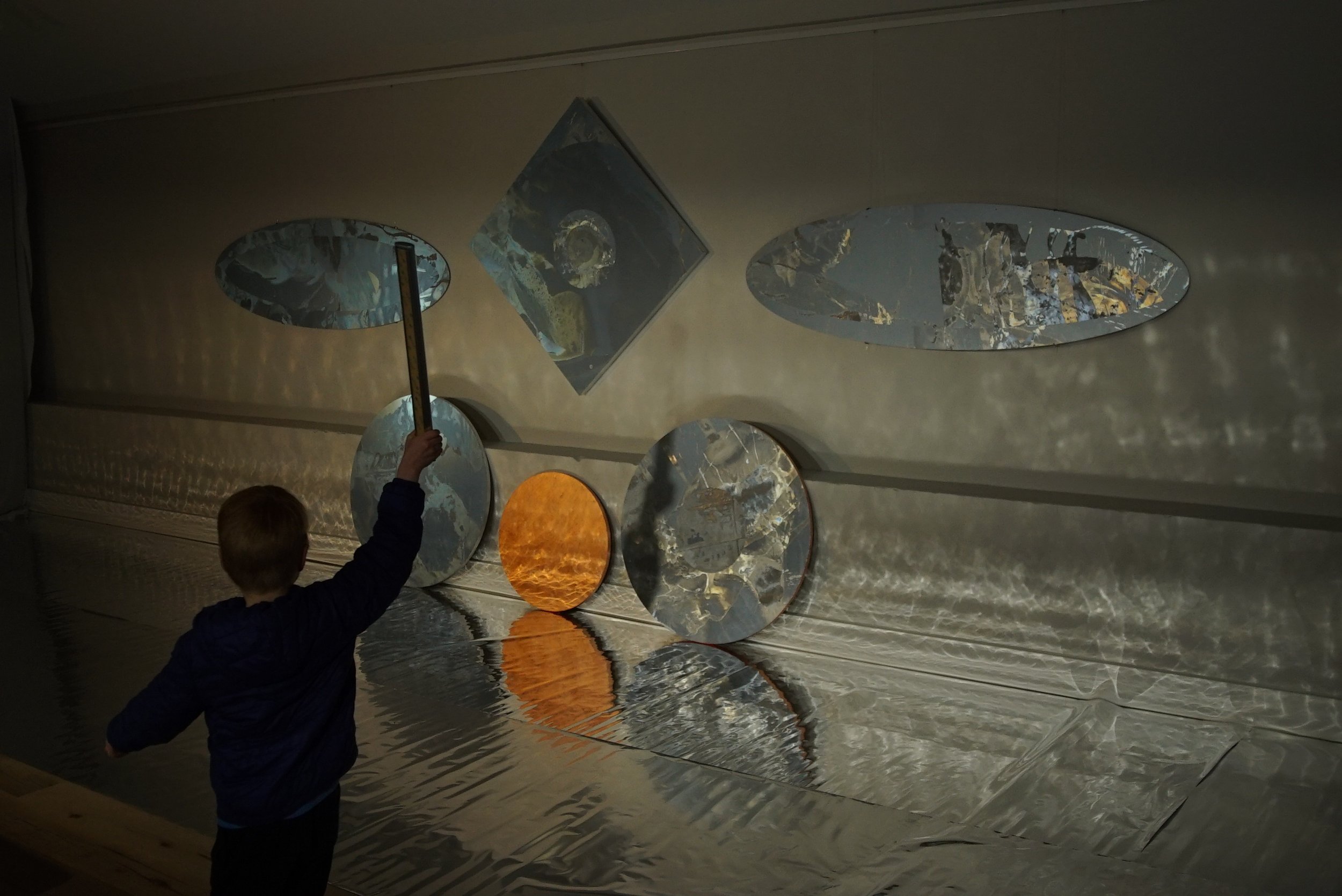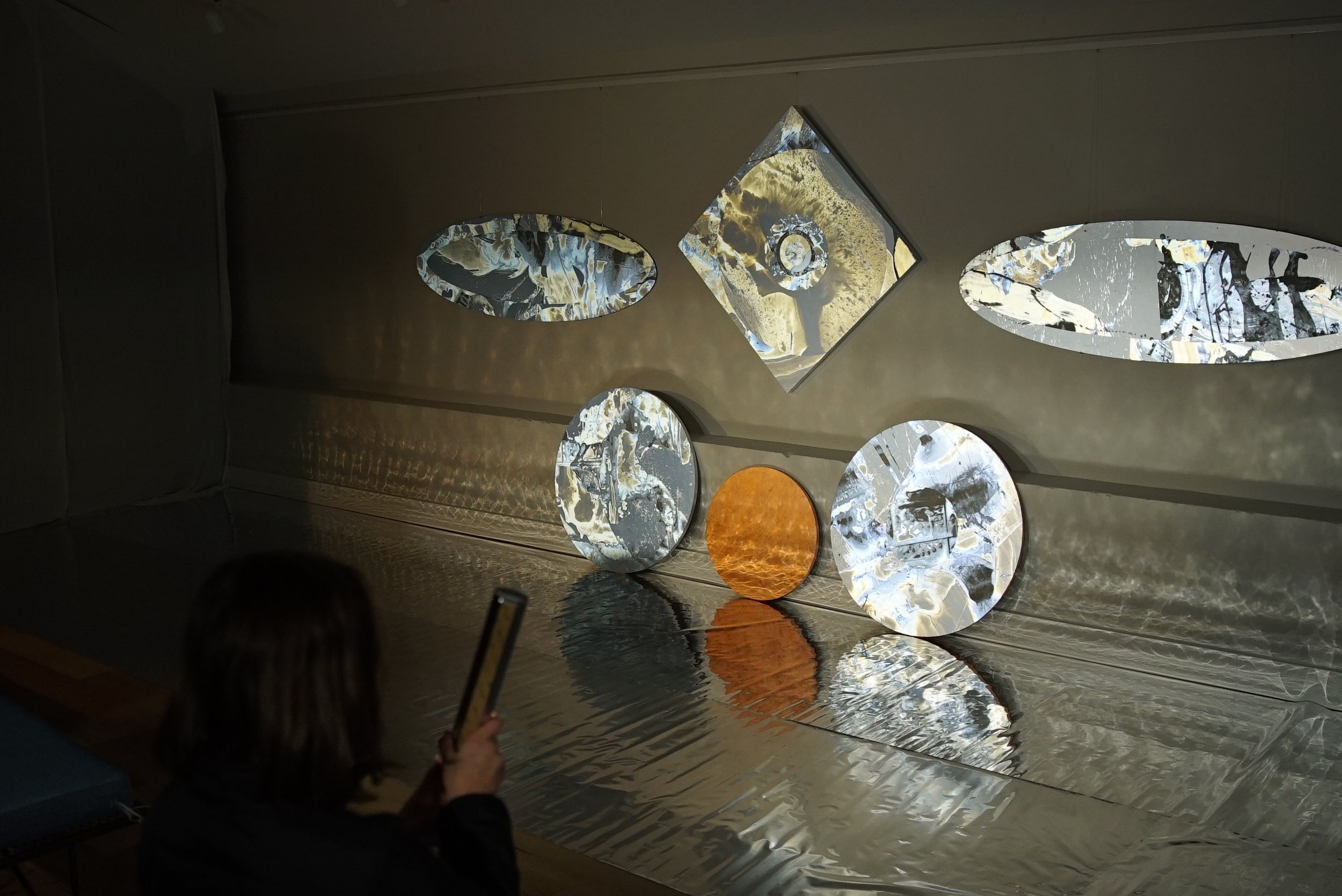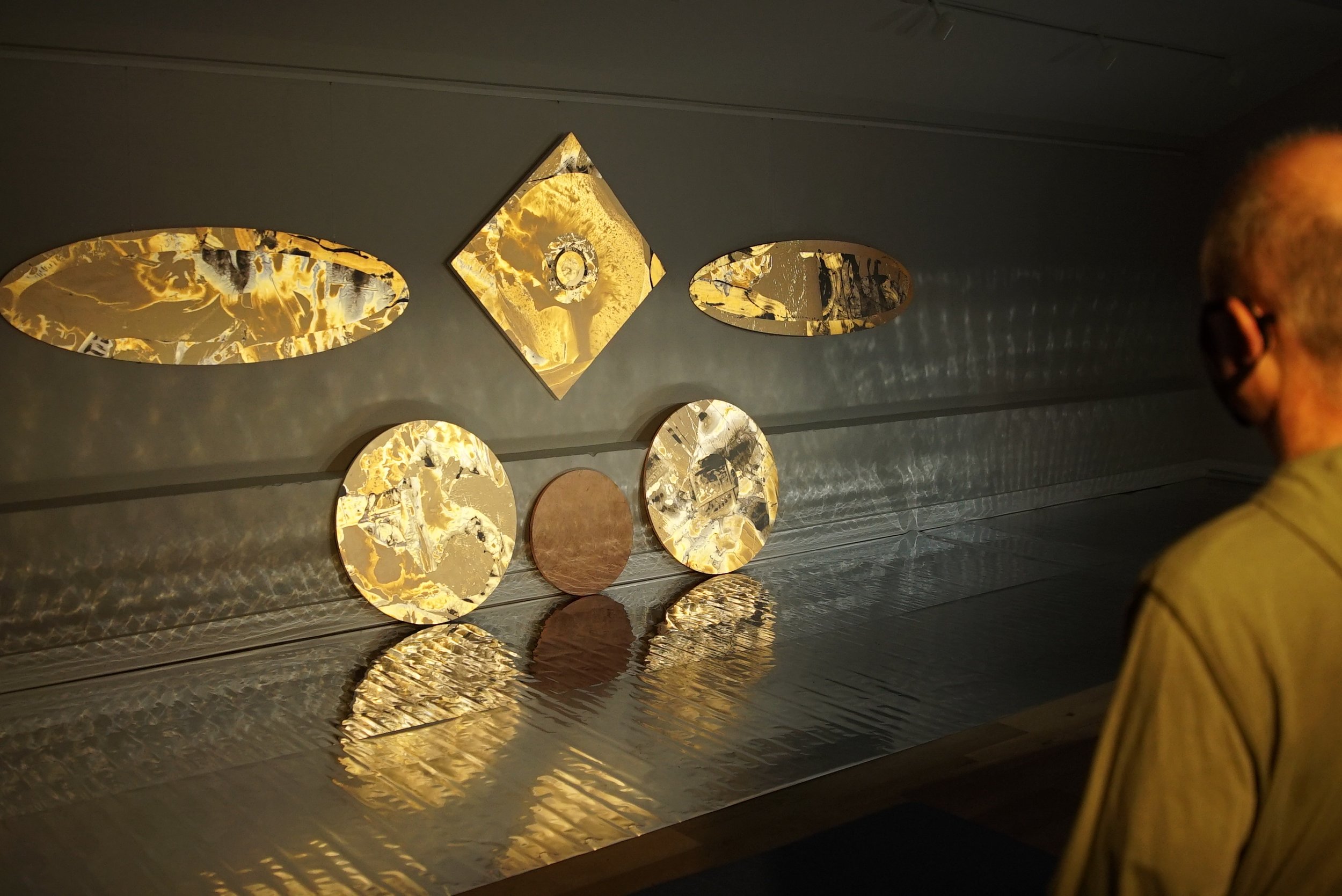Consider this Altar: There is no room which can contain God
How shall I call upon my God, my God, my Lord? Surely, when I call on him, I am calling on him to come into me. But what place is there in me where my God can enter me? Lord, my God, is there any room in me which can contain you? - St. Augustin, Confessions
My work questions the design of sacred space, and its effects on the nature of worship. I am particularly sensitive to how architecture, furniture and light of a particular environment shape a viewer’s posture into a heightened spiritual awareness. The altar and icon have particular significance to this body of work and how each gathers weight and presence. This work considers an evolution of the design language in the altarpiece, a symbol of God’s meeting place on earth. People first stacked stones when they met God on earth, yet gradually altars became more elaborate and were made with precious materials. Altarpieces become visual timelines of our evolving aesthetic preferences and our views about God. I am interested in this phenomena of multi use space or the repurposing of deemed “sacred” and “mundane” spaces. Currently, many churches meet in basements and high school auditoriums while old church buildings are repurposed for boutique hotels and condos.
Consider this Altar is a proposal to rework the traditional architecture of worship space such as the altarpiece and to focus on the use of transient materials such as scent and light.
Consider this Altar is a modern altar composed of a series of light reflective paintings stacked like totems on the wall. Their flat shapes convey portals and work to deconstruct the abstract for the viewer with embodied pictures of heaven. The surface of the material refracts light and creates a “presence” that responds to the light and viewer. The ovals and circles draw from an ancient understanding of shapes; the circle is symbolic of God’s wisdom and the square symbolizes mankind’s rationale. I reference these shapes in order to change the viewer’s orientation: these are not altars we have seen before, yet they are not entirely new. The surface material is a high visibility fabric that refracts light back to the viewer through tiny spheres adhered to the surface. The result is a highly reflective surface that performs well under poor light conditions, just as gold leaf functioned in Orthodox icons.
